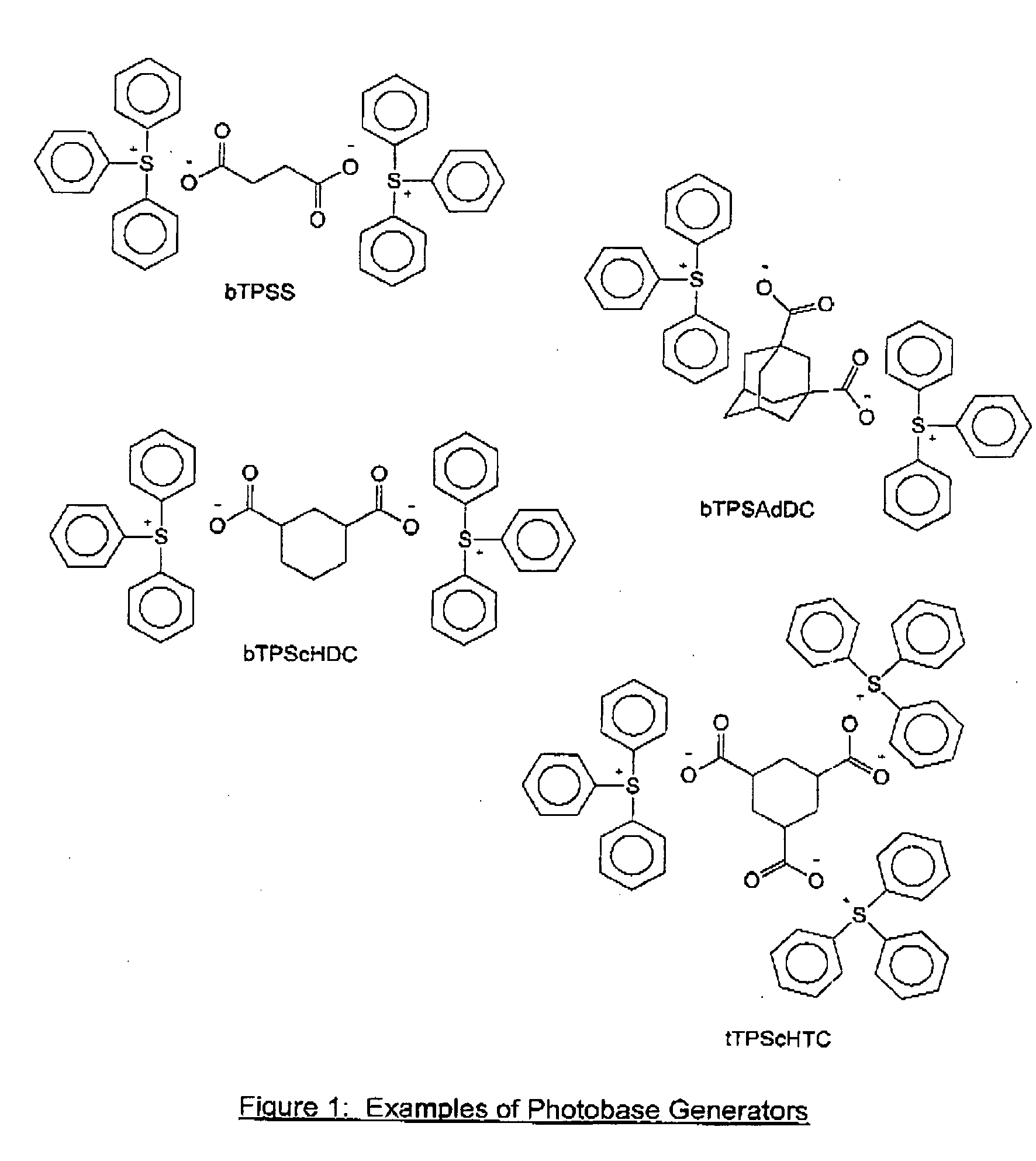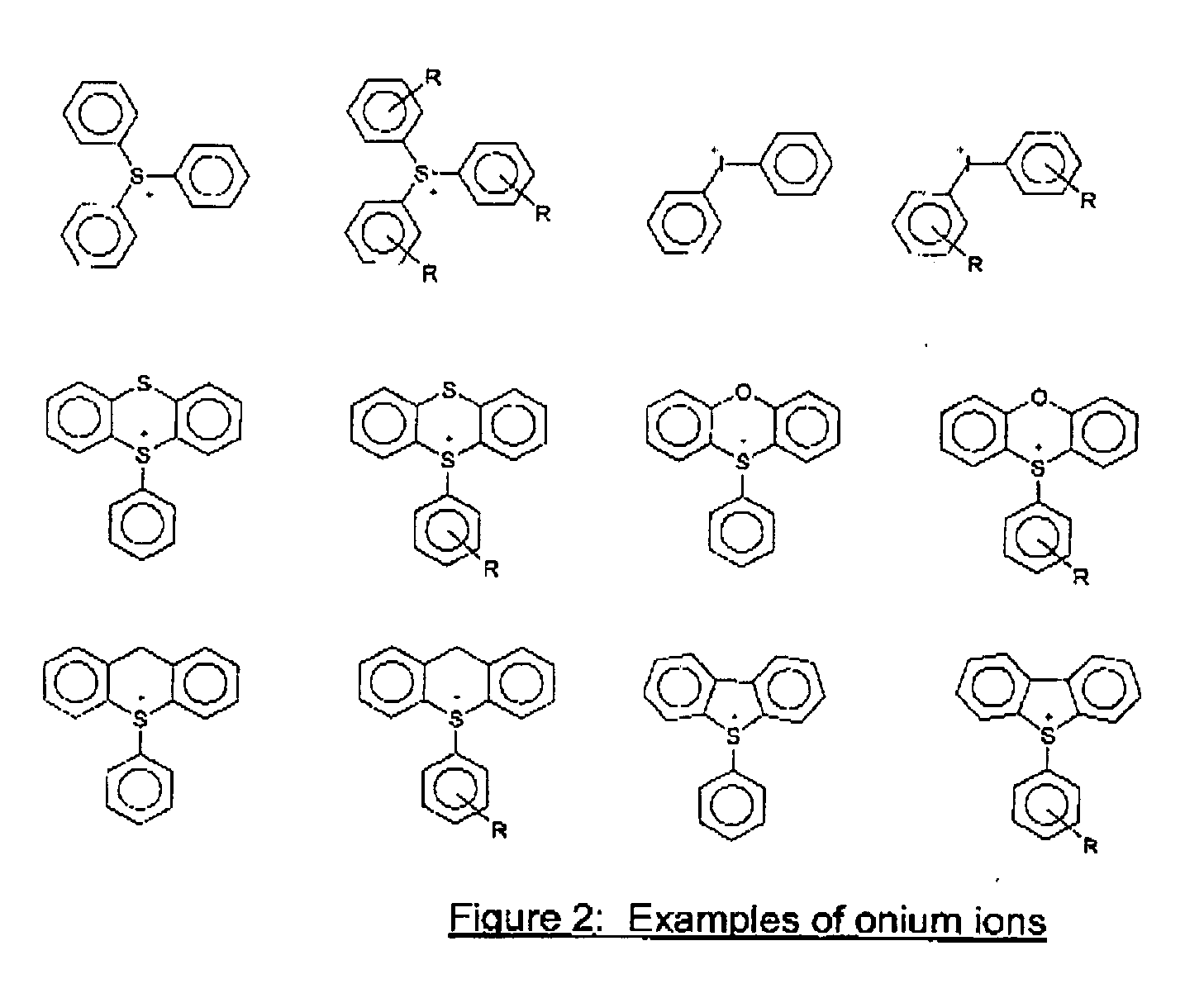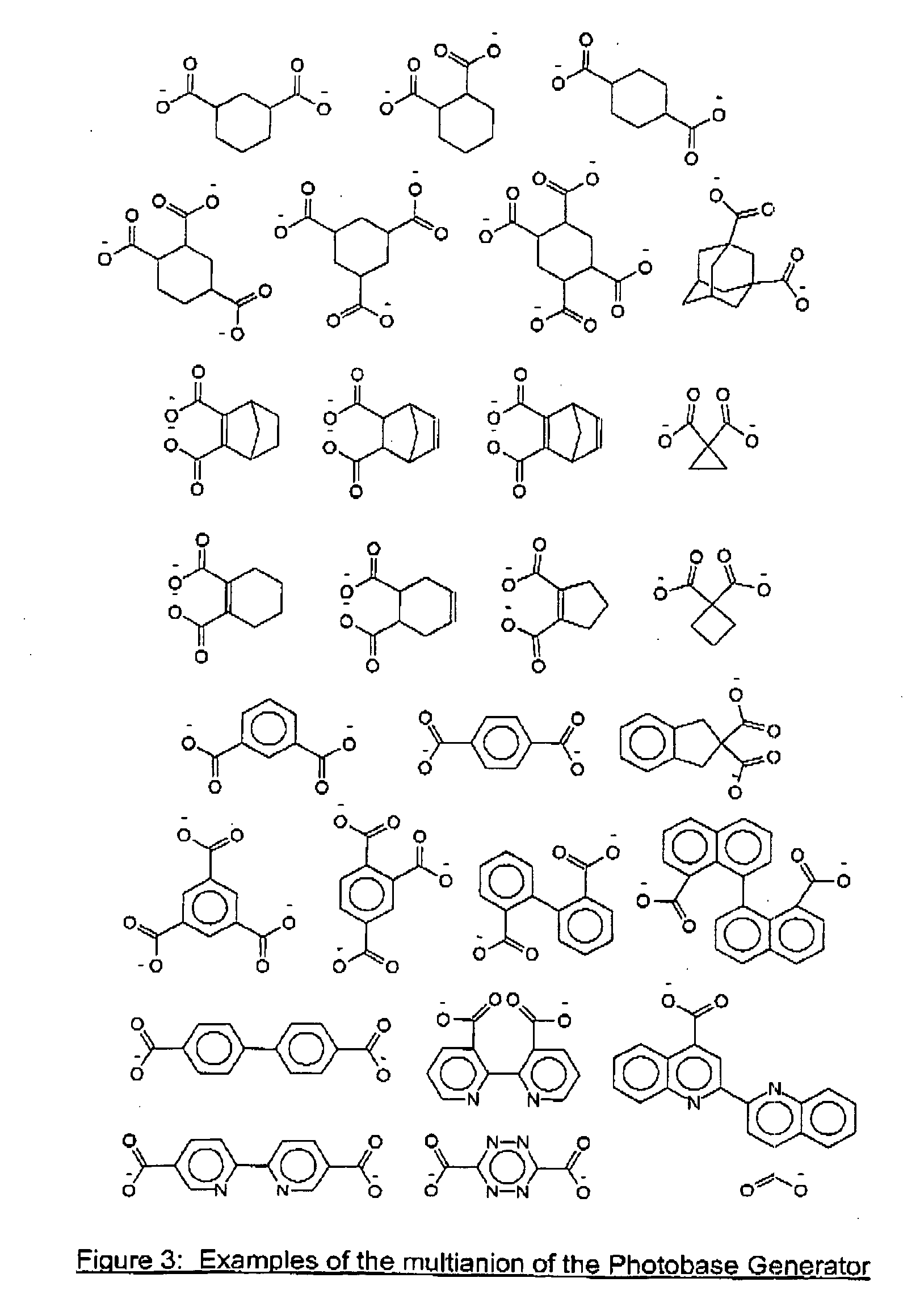Photosensitive Composition
a composition and composition technology, applied in the field of photosensitive compositions, can solve the problems of chemically amplified compositions, loss of image quality and resolution, changes in the dimensions of imaged photoresist, and poor process latitud
- Summary
- Abstract
- Description
- Claims
- Application Information
AI Technical Summary
Problems solved by technology
Method used
Image
Examples
synthesis example 1
Synthesis of Bis-Triphenylsulfonium succinate
bTPSS
[0051]Silver (I) oxide (2.43 g) was added to a solution of triphenylsulfonium bromide (3.43 g) in methanol (50 mL) and stirred overnight at room temperature. The mixture was filtered to remove the solids and the filtrate was treated with succinic acid (0.59 g) and stirred for 2 hours. The mixture was concentrated in vacuo and the residue washed with diethyl ether (60 mL) four times. The product formed was a yellow solid and was dried in vacuo to give 3.26 g with 99% yield. Results: HPLC purity: 97%. 1H NMR (CDCl3, δ): 2.28 (s, 4H), 7.44-7.65 (m, 30H).
synthesis example 2
Synthesis of bis-Triphenylsulfonium adamantane-1,3-dicarboxylate
bTPSAdDC
[0052]Silver (I) oxide (2.43 g) was added to a solution of triphenylsulfonium bromide (3.43 g) in methanol (100 mL) and stirred overnight at room temperature. The mixture was filtered to remove the solids and the filtrate was treated with adamantane-1,3-dicarboxylic acid (1.12 g) and stirred for 2 hours. The mixture was concentrated in vacuo and the residue washed with diethyl ether (25 mL) four times. The product formed was a beige solid was dried in vacuo to give 3.84 g, with about 100% yield. Results: HPLC purity: >99%. 1H NMR (CDCl3, δ): 1.30-1.86 (m, 14H), 7.50-7.74 (m, 30H).
synthesis example 3
Synthesis of Triphenylsulfonium cyclohexanecarboxylate
TPScHC
[0053]Silver (I) oxide (2.55 g) was added to a solution of triphenylsulfonium bromide (3.42 g) in methanol (100 mL) and stirred overnight at room temperature. The mixture was filtered to remove the solids and the filtrate was treated with cyclohexanecarboxylic acid (1.28 g) and stirred for 2 hours. The mixture was concentrated in vacuo and the residue washed with diethyl ether (25 mL) four times. The product was a yellow solid and was dried in vacuo to give 3.88 g with a 99% yield. Results: HPLC purity: >99%. 1H NMR (CDCl3, δ): 0.92 (quint, 3H), 1.09 (q, 2H), 1.38 (m, 3H), 1.59 (d, 2H), 1.87 (dt, 1H), 7.45-7.63 (m, 15H).
PUM
| Property | Measurement | Unit |
|---|---|---|
| pKa | aaaaa | aaaaa |
| wavelengths | aaaaa | aaaaa |
| wavelengths | aaaaa | aaaaa |
Abstract
Description
Claims
Application Information
 Login to View More
Login to View More - R&D
- Intellectual Property
- Life Sciences
- Materials
- Tech Scout
- Unparalleled Data Quality
- Higher Quality Content
- 60% Fewer Hallucinations
Browse by: Latest US Patents, China's latest patents, Technical Efficacy Thesaurus, Application Domain, Technology Topic, Popular Technical Reports.
© 2025 PatSnap. All rights reserved.Legal|Privacy policy|Modern Slavery Act Transparency Statement|Sitemap|About US| Contact US: help@patsnap.com



